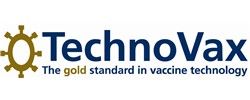Request Demo
Last update 08 May 2025
Adenovirus Infections, Human
Last update 08 May 2025
Basic Info
Synonyms Adenovirus Infection, Human, Adenovirus Infections, Human, Human Adenovirus Infection + [12] |
Introduction Respiratory and conjunctival infections caused by 33 identified serotypes of human adenoviruses. |
Related
6
Drugs associated with Adenovirus Infections, HumanTarget- |
Mechanism Immunostimulants |
Active Org. |
Originator Org. |
Active Indication |
Inactive Indication- |
Drug Highest PhaseApproved |
First Approval Ctry. / Loc. United States |
First Approval Date16 Mar 2011 |
Target- |
Mechanism Immunologic cytotoxicity |
Active Org. |
Originator Org. |
Active Indication |
Inactive Indication- |
Drug Highest PhasePhase 1/2 |
First Approval Ctry. / Loc.- |
First Approval Date20 Jan 1800 |
Target- |
Mechanism- |
Active Org. |
Originator Org. |
Active Indication |
Inactive Indication- |
Drug Highest PhasePreclinical |
First Approval Ctry. / Loc.- |
First Approval Date20 Jan 1800 |
1
Clinical Trials associated with Adenovirus Infections, HumanNCT04285788
Incidence and Outcomes Associated With the Management of Adenovirus Infections in Allogeneic Hematopoietic Cell Transplant Recipients: AdVance
To depict the incidence, outcomes and standards of care (SoC) of adenovirus (AdV) infections and associated practice patterns in allogeneic hematopoietic cell transplant recipients. It is expected that participating centers will be in the United Kingdom, France, Spain, Germany, and Italy.
Start Date01 Jan 2013 |
Sponsor / Collaborator |
100 Clinical Results associated with Adenovirus Infections, Human
Login to view more data
100 Translational Medicine associated with Adenovirus Infections, Human
Login to view more data
0 Patents (Medical) associated with Adenovirus Infections, Human
Login to view more data
264
Literatures (Medical) associated with Adenovirus Infections, Human01 Apr 2025·Emerging Infectious Diseases
Human Adenovirus B55 Infection in Patient without Recent Travel History, France
Article
Author: Rachik, Abdeljalil Senhaji ; Dutkiewicz, Marion ; Salmona, Maud ; Mercier-Delarue, Séverine ; Feghoul, Linda ; de Vesvrotte, Clara Richard ; Hervier, Baptiste ; LeGoff, Jérôme ; Mohamedi, Menel
15 Mar 2025·The FASEB Journal
Human adenovirus serotype 5 infection dysregulates cysteine, purine, and unsaturated fatty acid metabolism in fibroblasts
Article
Author: Sanchez, Bailey‐J C. ; Ortiz, Rudy M. ; Grasis, Juris A.
01 Mar 2025·Acta Histochemica
New insights into persistent corneal subepithelial infiltrates following epidemic keratoconjunctivitis: The first case report with ultrastructural and immunohistochemical investigations
Article
Author: Rosa, Irene ; Buzzi, Matilde ; Guasti, Daniele ; Marini, Mirca ; Mencucci, Rita ; Sgambati, Eleonora ; Manetti, Mirko ; Cennamo, Michela
1
News (Medical) associated with Adenovirus Infections, Human12 Jul 2021
Important expansion of menu for NeuMoDx 96 and 288 Molecular Systems marks the 15th assay with a CE-IVD marking, one of the largest menus available for integrated PCR testing
QIAGEN’s NeuMoDx HAdV Quant Assay Secures CE-IVD Certification for Automated Testing to Detect Human Adenovirus Infections. (Credit: Belova59 from Pixabay)
QIAGEN N.V. (NYSE: QGEN; Frankfurt Prime Standard: QIA) today announced that its NeuMoDx™ HAdV Quant Assay for the identification and quantification of human adenovirus (HAdV) DNA has received CE-IVD certification for the European Union and other countries that accept this marking.
This milestone marks the 15th assay available on the NeuMoDx™ 96 and 288 Molecular Systems, which is considered one of the broadest menus available among competitors. The tests can be run in true random access along with Laboratory Developed Tests (LDTs). Additional assays planned for CE-IVD launch in 2021 include Herpes Simplex Virus (HSV I/II), Human Herpesvirus 6 (HHV-6) as well as an FDA submission for Chlamydia & Gonorrhea (CT/NG).
Testing for the human adenovirus is critical since it can cause severe respiratory and other diseases in patients with weakened immune systems, a common consequence of organ transplantation.
The new HAdV Quant Assay was developed in partnership with Sentinel Diagnostics, an IVD company engaged in the development and production of diagnostic kits for Clinical Chemistry, Immunochemistry and Molecular Diagnostics. The availability of the HAdV assay strengthens the current NeuMoDx transplant assay menu that already includes CE-marked tests for cytomegalovirus (CMV), Epstein–Barr virus (EBV) and BK Virus (BKV) viral load monitoring for the management of immunocompromised patients, such as those who have undergone organ transplantation.
All of these assays make use of QIAGEN’s automated, three-step NeuMoDx solutions that extract DNA from blood or urine to isolate the target nucleic acids and then conduct a real-time polymerase chain reaction (RT-PCR) to target conserved sequences in the HAdV genome.
The NeuMoDx solutions currently offer CE-IVD tests for various viral and bacterial pathogens. Aside from assays for respiratory infections from SARS-CoV-2 to the 4-Plex test for Influenza A and B, RSV and SARS-CoV-2 covering the most common respiratory pathogens, there are tests for blood-borne viruses and post-transplant monitoring for CMV, EBV and BKV. The menu also features assays covering sexual and reproductive health including HPV and Chlamydia trachomatis.
Source: Company Press Release
Collaborate
Analysis
Perform a panoramic analysis of this field.
login
or

AI Agents Built for Biopharma Breakthroughs
Accelerate discovery. Empower decisions. Transform outcomes.
Get started for free today!
Accelerate Strategic R&D decision making with Synapse, PatSnap’s AI-powered Connected Innovation Intelligence Platform Built for Life Sciences Professionals.
Start your data trial now!
Synapse data is also accessible to external entities via APIs or data packages. Empower better decisions with the latest in pharmaceutical intelligence.
Bio
Bio Sequences Search & Analysis
Sign up for free
Chemical
Chemical Structures Search & Analysis
Sign up for free



